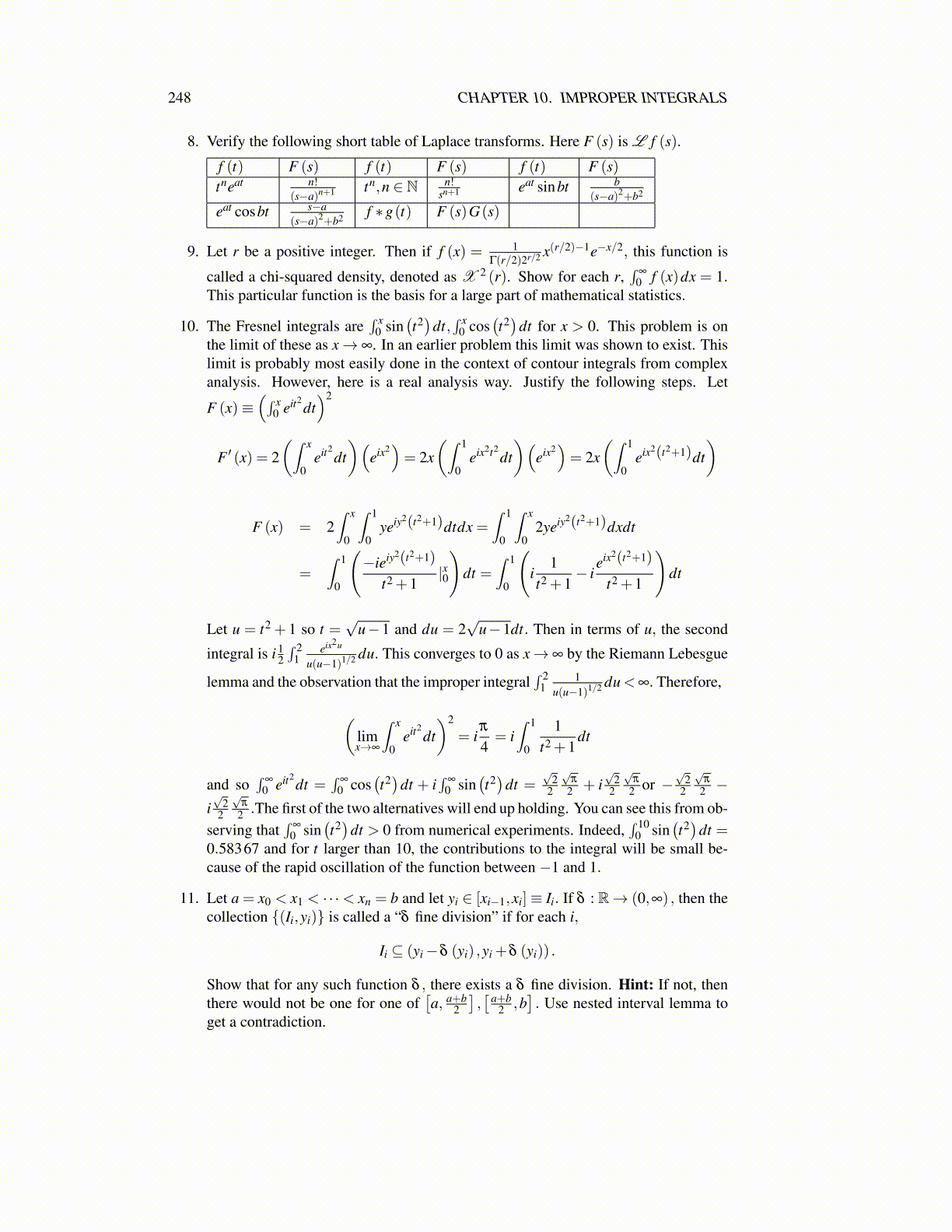
248 CHAPTER 10. IMPROPER INTEGRALS
Now differentiate and try to show that the derivative is negative for x ∈ (m,m+1).Thus the desired derivative is(
m−1
∑k=0
1x− k
− lnx
)+
1Γ(x−m)
∫∞
0ln(t) tx−(m+1)e−tdt− 1
2x
The first term is negative from the definition of ln(x) . The derivative being nega-tive will be shown if it is shown that the integral in the above is negative. Do anintegration by parts on this integral and split the integrals to obtain∫
∞
0ln(t) tx−(m+1)e−tdt = −
∫ 1
0tσ e−tdt +
∫ 1
0(t−σ)e−ttσ ln(t)dt
+∫
∞
1tσ e−t (1− (t−σ) ln(t))dt
where σ = (x−m)− 1 ∈ (−1,0) so −σ > 0. The last integral is negative because(t−σ) = t +(−σ)> 1. The first two integrals on the right are obviously negative.
17. Lemma 10.2.6 can be generalized. Suppose h, g are defined on all of R and that g isof bounded variation on every finite interval while h is continuous. Suppose also thatthere exists c, possibly not in [a,b] such that H (c)(g(b)−g(a)) =
∫ ba Hdg. Then
the same conclusion holds. That is∫ b
a ghdx = g(b)∫ b
c h(t)dt +g(a)∫ c
a h(t)dt. Thisgeneralizes the second mean value theorem for integrals.
18. Here is another version of Lemma 10.2.6. Let h be continuous and g is decreasingon [a,β ] and increasing on [β ,b] ,β ∈ [a,b]. Let these functions be defined on [a,b] .Then there exist c, ĉ in [a,β ] , [β ,b] respectively such that∫ b
aghdt = g(β )
∫ ĉ
ch(t)dt +g(a)
∫ c
ah(t)dt +g(b)
∫ b
ĉh(t)dt (10.12)
For the above identity to be valid, it is sufficient that c, ĉ∈ [a,b] satisfy the following.For H ′ = h
H (c)(g(β )−g(a)) =∫
β
aHdg,
H (ĉ)(g(b)−g(β )) =∫ b
β
Hdg (10.13)